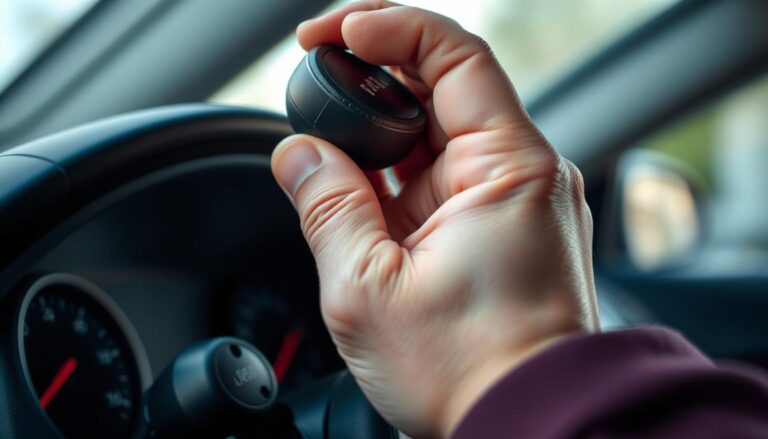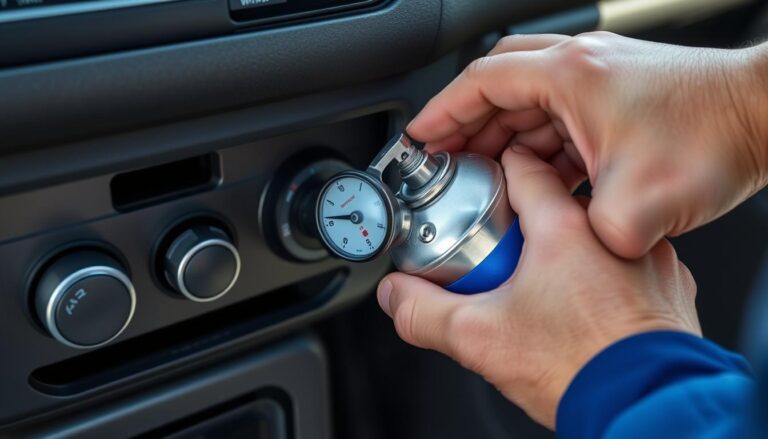The employment of ozone generators has been extolled as a panacea for air purification and odor elimination. A recent case study, though, reveals the latent dangers associated with ozone generators, notably when deployed in confined environments such as vehicles.
An incident involving an ozone generator precipitated considerable car interior damage, prompting a reevaluation of the risks of ozone generators. This occurrence serves as a stark reminder of the imperative for prudence and a comprehensive comprehension when employing such apparatus.
This event has catalyzed an interest in delving into the potential perils of ozone generators and the strategies to circumvent these risks.
Key Takeaways
- The potential dangers of using ozone generators in enclosed spaces.
- The risk of damage to car interiors when using ozone generators.
- Understanding the risks associated with ozone generators.
- The importance of proper usage and precautions.
- Potential long-term effects of ozone generator misuse.
The Unfortunate Discovery: A Car Owner’s Nightmare
A car owner, in an attempt to eradicate odors, employed an ozone generator, unaware of the impending calamity. The individual had encountered persistent malodors within their vehicle, prompting a quest for a remedy.
Initial Intentions: Why the Owner Chose an Ozone Generator
The decision to utilize an ozone generator was predicated on its touted efficacy in odor elimination. Ozone generators are frequently promoted as a panacea for vehicle deodorization, promising to imbue interiors with a fresh aroma.
Expected Benefits and Promised Results
The allure of eradicating odor-causing bacteria and revitalizing the vehicle’s scent was irresistible. The expectation was that ozone generators would deliver a thorough cleansing, eschewing the use of caustic chemicals.
The Setup Process Used
The procedure entailed positioning the ozone generator within the vehicle and activating it for an extended period. Adherence to the manufacturer’s guidelines was paramount, despite the potential risks.
The Shocking Aftermath: Discovering the Damage
Upon reentering their vehicle, the owner was confronted with a distressing spectacle. The interior had suffered considerable deterioration, manifesting in visible damage.
Visual Evidence of Interior Deterioration

The extent of the damage was profound, with the dashboard and seats displaying cracks and discoloration.
Immediate Owner Response
The owner’s reaction was one of dismay, prompting an immediate investigation into the cause of the damage. Research into potential culprits ensued.
| Component | Damage Observed | Possible Cause |
|---|---|---|
| Dashboard | Cracks and discoloration | Ozone reaction with materials |
| Seats | Fading and cracking | Ozone degradation of leather/fabric |
Understanding Ozone Generators: Science and Purpose
The intricacies of ozone generator functionality are paramount for evaluating their efficacy in vehicle deodorization. These devices are engineered to generate ozone, a triatomic oxygen molecule, for diverse applications, notably odor elimination in automotive environments.
What Are Ozone Generators and How Do They Work?
Ozone generators operate by synthesizing ozone (O3) from atmospheric oxygen (O2). This synthesis is facilitated through electrical discharges that fragment oxygen molecules into singular atoms. These atoms then coalesce with additional oxygen molecules to form ozone.
The Chemistry of Ozone Production
Ozone generation entails a complex series of chemical reactions. Oxygen molecules are initially fragmented into individual atoms via corona discharge. These atoms then combine with other oxygen molecules to form ozone. The underlying chemistry can be succinctly represented as: O2 → 2O and then O + O2 → O3.
Types of Ozone Generators on the Market
The market offers a variety of ozone generators, including cold corona discharge, hot corona discharge, and ultraviolet (UV) light generators. Each variant employs distinct mechanisms for ozone production, differing in efficiency and application. Notably, cold corona discharge generators are frequently employed for vehicle deodorization due to their efficacy and safety profile.
Common Uses in Vehicle Deodorization
Ozone generators are extensively utilized for odor elimination in vehicles. Their popularity among detailers and DIY enthusiasts stems from their proven effectiveness in tackling persistent odors.
Marketing Claims vs. Reality
Marketing often touts ozone generators as a universal solution for odor removal, yet the reality is more complex. While they can be effective, their deployment necessitates adherence to safety protocols to prevent damage to vehicle interiors.
Popularity Among Detailers and DIY Enthusiasts
“Ozone generators have revolutionized the way we approach odor removal in vehicles. They offer a powerful solution that, when used correctly, can be very effective.” – Detailer
Ozone generators are preferred by detailers and DIY enthusiasts for their capacity to eradicate odors at their source. It is imperative, though, to adhere strictly to the manufacturer’s guidelines to ensure both safety and efficacy.

Ozone Generator Ruined My Car: Understanding the Risks and Precautions
Ozone generators, though effective in odor elimination, present considerable risks to vehicle interiors when misused. The potential for damage is significant, necessitating a thorough comprehension of these risks for car owners contemplating this deodorization method.
Documented Damage to Vehicle Interiors
The interior of a vehicle is notably susceptible to ozone generator damage. Components such as rubber, plastic, leather, fabric, and electronics are all at risk.
Effects on Rubber and Plastic Components
Ozone exposure can cause rubber to crack and degrade, resulting in premature wear on seals and gaskets. Plastic components may become brittle or discolored due to ozone exposure.
Impact on Leather, Fabric, and Electronics
Leather and fabric can experience discoloration and weakening of fibers. Electronics may malfunction or corrode due to ozone’s reactive properties.
Chemical Reactions with Vehicle Materials
The damage caused by ozone generators is largely due to chemical reactions between ozone and vehicle interior materials.
The Oxidation Process Explained
Ozone, a highly reactive form of oxygen, readily oxidizes various materials, leading to their deterioration. This oxidation process is the primary mechanism behind the damage caused by ozone generators.
Long-term Deterioration Concerns
Continued exposure to ozone can lead to significant deterioration of vehicle interior components. This compromises both the aesthetic appeal and functional integrity of the vehicle over time.
To mitigate these risks, understanding the potential for damage and taking appropriate precautions when using ozone generators in vehicles is essential. This includes following manufacturer guidelines, limiting exposure times, and ensuring good ventilation.
- Always follow the manufacturer’s instructions for the ozone generator.
- Limit the duration of ozone generator use to the minimum required.
- Ensure the vehicle is well-ventilated after use to remove any residual ozone.
Analyzing the Case: What Went Wrong
To comprehend the mishap, a thorough examination of the ozone generator’s misuse is imperative. This incident underscores the significance of adhering to proper usage protocols and the dire consequences of neglecting them.
Improper Usage Patterns
The misuse of ozone generators frequently stems from elementary operational errors. Mistakes are predominantly observed in the duration and concentration of ozone output, coupled with inadequate ventilation during treatment.
Duration and Concentration Errors
Excessive usage or high concentration of ozone can irreparably damage vehicle interiors. The ozone reacts with various materials, leading to deterioration that incurs substantial repair costs. Adherence to the manufacturer’s guidelines is paramount to circumvent such outcomes.
Lack of Proper Ventilation
Proper ventilation is indispensable when employing an ozone generator. In its absence, ozone becomes trapped within the vehicle, intensifying its detrimental effects on interior materials. Ensuring optimal airflow can markedly diminish damage risk.
Contributing Factors to the Damage
Aside from misuse, several factors can exacerbate the damage caused by ozone generators. These include vehicle-specific vulnerabilities and environmental conditions during treatment.
Vehicle-Specific Vulnerabilities
Diverse vehicles possess unique interior materials and designs, some inherently more susceptible to ozone damage. Recognizing these vulnerabilities is crucial for risk mitigation.
Environmental Conditions During Treatment
Environmental factors, such as temperature and humidity, significantly impact the efficacy and safety of ozone generator treatment. For instance, elevated temperatures can expedite chemical reactions that compromise vehicle interiors.
In summary, the damage from the ozone generator in this case study was a result of a combination of misuse and other contributing factors. By grasping these elements, vehicle owners can proactively prevent similar incidents in the future.
Essential Precautions and Best Practices
To circumvent the hazards of ozone generator misuse, it is imperative to grasp the fundamental precautions and best practices. The application of ozone generators for the eradication of vehicle odors can be efficacious, yet it necessitates meticulous consideration of several variables to guarantee safety and efficacy.
Proper Ozone Generator Usage Guidelines
Adherence to specific guidelines is crucial when employing an ozone generator within your vehicle to mitigate risks. Always refer to the manufacturer’s instructions for guidance on operation and maintenance.
Recommended Duration and Concentration Levels
The duration and concentration levels of ozone exposure are paramount. Typically, ozone concentrations between 1-5 ppm (parts per million) are advocated for odor removal. The precise duration, though, will hinge on the vehicle’s dimensions and the odor’s intensity.
Ventilation Requirements
Ensuring adequate ventilation post-ozone generator usage is paramount. Prior to reoccupation, guarantee that your vehicle is well-ventilated to avert potential health risks associated with ozone exposure.
| Vehicle Size | Recommended Ozone Concentration (ppm) | Duration (hours) |
|---|---|---|
| Small | 1-2 | 2-3 |
| Medium | 2-3 | 3-4 |
| Large | 3-5 | 4-6 |
Safer Alternatives for Vehicle Odor Removal
Though ozone generators can be efficacious, there exist safer alternatives for vehicle odor removal, potentially more suitable for certain users.
Professional Detailing Options
Professional detailing services frequently incorporate advanced odor removal techniques that are both effective and safe. These services can be notably advantageous for persistent or severe odors.
Non-Ozone DIY Solutions
For those inclined towards DIY solutions, non-ozone methods can prove effective. These encompass the utilization of baking soda, activated charcoal, or specialized odor-removing products tailored for vehicles.
Conclusion: Lessons Learned and Moving Forward
The case study on the ozone generator mishap underscores the imperative for vehicle safety and future precautions. It is paramount to comprehend the hazards linked to ozone generators to avert analogous incidents.
An examination of the damage resultant from the misuse of ozone generators elucidates the necessity of preventive measures. Adherence to established usage protocols and the exploration of safer alternatives for vehicle odor elimination are imperative.
Looking ahead, prioritizing vehicle safety and adopting a cautious stance towards ozone generator utilization is critical. This approach enables individuals to mitigate risks and guarantee a secure and efficacious odor removal process.
FAQ
What are the risks associated with using ozone generators in vehicles?
Utilizing ozone generators within vehicles poses significant threats to interior components. These include rubber, plastic, leather, fabric, and electronic systems, due to the oxidation process and the resultant long-term deterioration.
How do ozone generators work and what is the chemistry behind ozone production?
The operation of ozone generators hinges on the electrical discharge that cleaves oxygen molecules into singular atoms. These atoms then coalesce with other oxygen molecules, forming ozone (O3).
What are the common uses of ozone generators in vehicle deodorization?
Ozone generators are frequently employed to eradicate odors within vehicles. Notwithstanding, the veracity of marketing claims regarding their efficacy is often in question. Their popularity among detailers and DIY enthusiasts may not be entirely merited.
What are the proper usage guidelines for ozone generators in vehicles?
Adherence to recommended duration and concentration levels is paramount when utilizing ozone generators. Ensuring proper ventilation and being cognizant of vehicle-specific vulnerabilities and environmental conditions during treatment is also crucial.
Are there safer alternatives to ozone generators for vehicle odor removal?
Affirmatively, safer alternatives exist. These include professional detailing services and non-ozone DIY solutions, which are often more effective and safer for vehicle interiors.
What are the effects of ozone generators on rubber and plastic components in vehicles?
Ozone exposure can precipitate cracking, brittleness, and discoloration in rubber and plastic components. This can lead to premature wear and potentially necessitate costly repairs.
How can I prevent damage to my vehicle’s interior when using an ozone generator?
To mitigate risks, it is imperative to adhere to proper usage guidelines. Ensure adequate ventilation and closely monitor the treatment process to avoid excessive ozone exposure.
What are the long-term deterioration concerns associated with ozone generator use in vehicles?
Extended exposure to ozone can result in the gradual degradation of various materials. This includes leather, fabric, and electronics, potentially leading to costly repairs or replacement.


